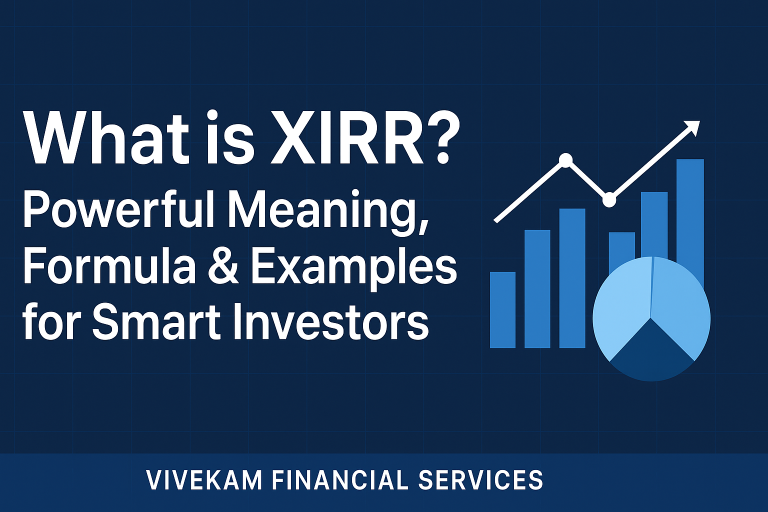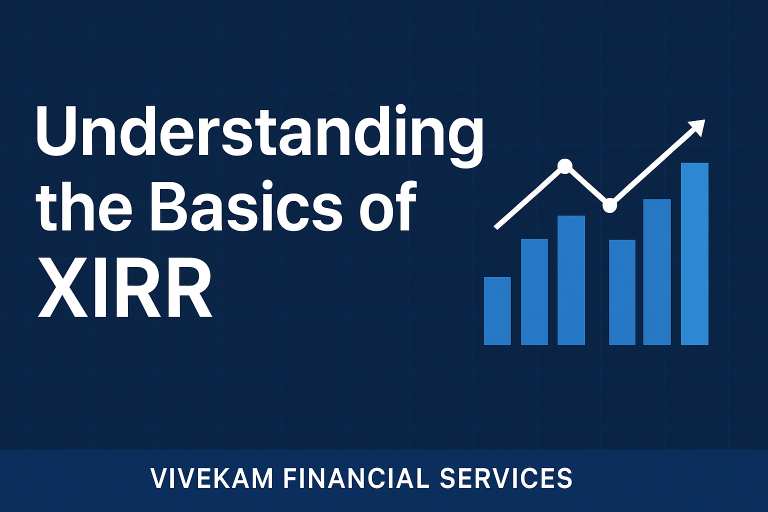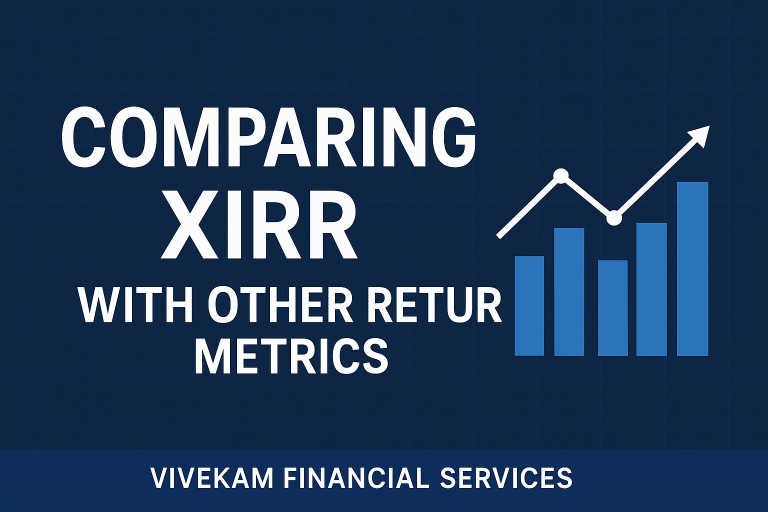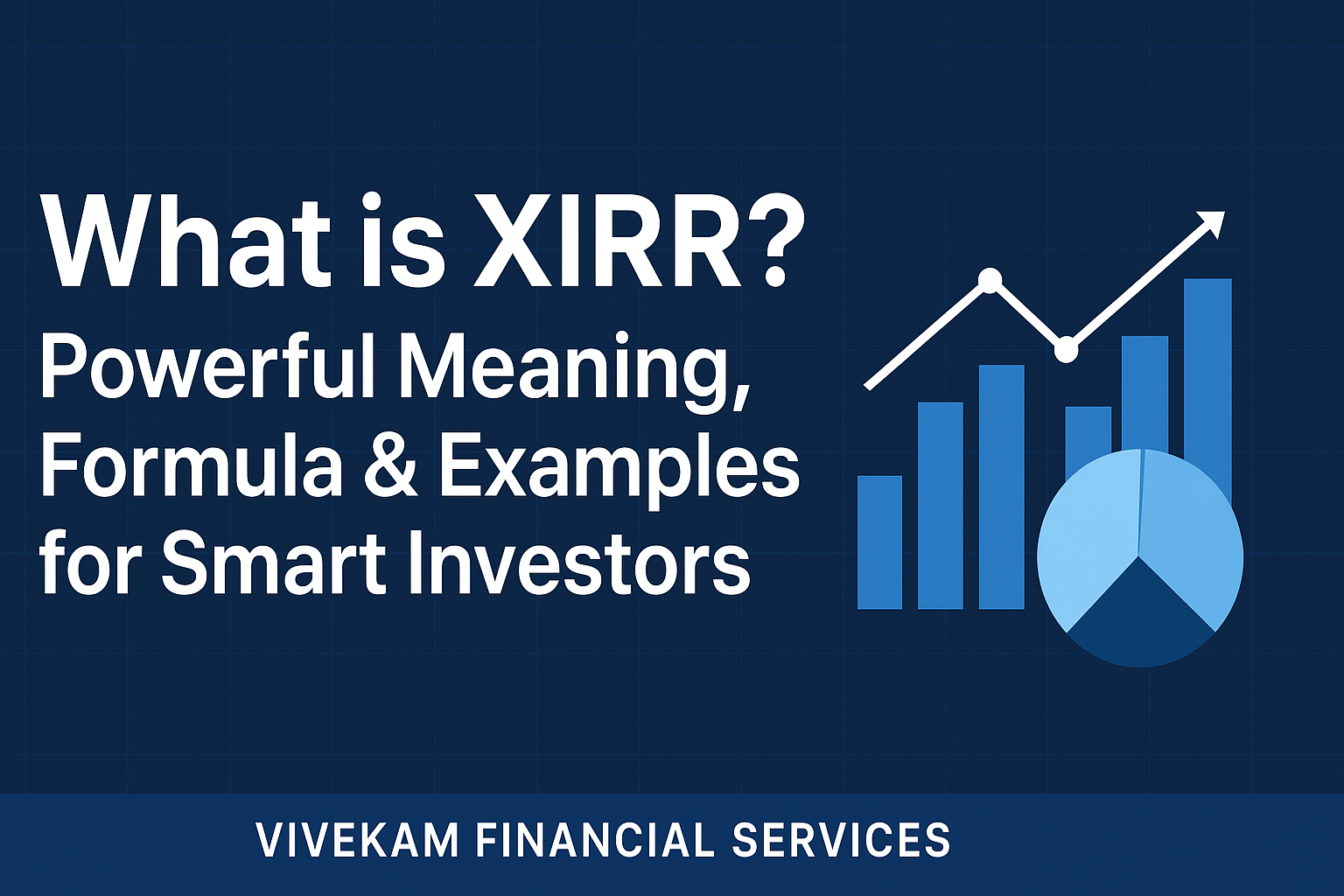What is XIRR? Powerful Meaning, Formula & Examples for Smart Investors

Ever looked at your mutual fund statement and thought: “Wait… My SIP says I invested ₹1,20,000, but my returns look way higher (or lower). How is this calculated?”
That’s where XIRR comes in.
This metric is not just financial jargon—it’s the truth serum for your returns. Let’s decode the XIRR meaning, formula, and real-world examples to see why every smart investor should care.
Understanding the Basics of XIRR

XIRR Full Form
The full form of XIRR is Extended Internal Rate of Return. Sounds fancy, right? In plain English: it’s a way of finding out how much money your investments actually earned you, considering the timing of each payment.
XIRR Meaning Explained in Simple Terms
Think of XIRR as your investment’s personal fitness tracker.
- It doesn’t just say “you ran 5 km”.
- It tells you “you ran 5 km in 30 minutes, at 6:00 am, uphill”.
In short: XIRR adjusts for both money and time.
Why Investors Use XIRR
Because in real life:
- You invest at different times.
- You put in different amounts.
- You withdraw at odd intervals.
CAGR can’t handle that. XIRR can.
XIRR in Mutual Funds & SIP Investments

What is XIRR in Mutual Fund Returns?
If you only invested one lump sum, CAGR would work fine.
But in mutual funds, you often add or withdraw money at random. XIRR is the only reliable way to measure how your investment really performed.
What is XIRR in SIP?
SIPs are a classic case for XIRR. Since you invest small amounts every month, XIRR captures the true annualized return. Without it, you’d be fooling yourself with wrong numbers.
The XIRR Formula: How It Works
The magic formula is:
=XIRR(values, dates)
- Values → Negative numbers (investments), positive numbers (withdrawals/redemptions).
- Dates → The actual transaction dates.
How to Calculate XIRR Step by Step
- Record all your SIP payments (₹5,000, ₹5,000, ₹5,000 …).
- Add redemption or current NAV as a positive value.
- Use Excel’s =XIRR() function.
- Boom—you have your true return.
XIRR Example for Investors
Imagine this:
- You invest ₹5,000 every month for 12 months → Total invested: ₹60,000.
- At the end, your fund is worth ₹72,000.
Absolute return says: “You made 20% profit.”
But wait… you didn’t invest all ₹60,000 on day one! XIRR adjusts for when each ₹5,000 was invested and shows the real annualized return (usually higher).
Comparing XIRR with Other Return Metrics

XIRR vs CAGR: Key Differences
- CAGR = Simple, assumes lump sum.
- XIRR = Complex, handles SIPs and staggered investments.


Absolute Return vs XIRR
- Absolute Return is like judging a cricket player only by runs scored.
- XIRR is like checking strike rate + runs + context.
Which one tells the full story? Obviously, XIRR.
Advantages & Limitations of Using XIRR
Benefits of XIRR
- Works for SIPs, SWPs, and top-ups.
- Adjusts for real-life investing behavior.
- Gives you the true picture of annualized returns.
Drawbacks of XIRR
- Needs Excel (unless you love math).
- Beginners may find it a bit “too technical.”
Real-Life Scenarios Where XIRR Matters
XIRR in SIP Investments
If you’re a salaried professional putting in monthly SIPs, XIRR is non-negotiable. It shows how your money grew step by step.
XIRR in Lump Sum Investments
If you just invested ₹1 lakh once and held it for 5 years, CAGR = XIRR. In this case, no need to overcomplicate things.
FAQs on XIRR
Q1. What is XIRR return?
It’s the annualized return considering cash flow timing.
Q2. Is XIRR better than CAGR?
Yes, for SIPs. No, for a lump sum.
Q3. How do I calculate XIRR in Excel?
Use =XIRR(values, dates). Done.
Q4. What is XIRR in SIP?
It’s the only accurate way to measure SIP performance.
Q5. Is Absolute Return better than XIRR?
Nope. Absolute return ignores time. XIRR wins.
Q6. Can XIRR be negative?
Yes. If your fund lost money, XIRR will tell you the ugly truth.
Conclusion: Why XIRR is Essential for Smart Investors
If you’re investing in mutual funds or SIPs and not checking XIRR, you’re driving blind.
- CAGR is good for textbooks.
- Absolute return is good for marketing brochures.
- But XIRR tells you the truth.











